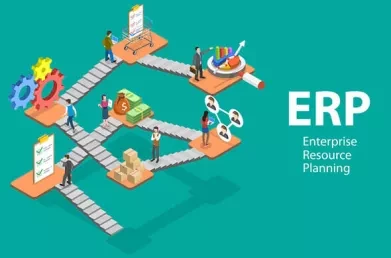Phased ERP Implementations – Part 2: Ensuring Success
There are two basic approaches to implementing an ERP solution. “Big-bang” - meaning going live with all functions, for all divisions and all users at once – or phasing the implementation.
Phased ERP Implementations - Part 1 of this blog outlined what phasing means in an ERP project and considered some of the pros and cons of a phased approach to implementing ERP. This companion piece looks at some key good practices in ERP phasing and considers when you need to decide on an approach.
How is ERP phasing done well?
-
Global design
As a general rule the design or blueprint stage of your ERP implementation should cover the full scope to be implemented, even if that is to be built and deployed in phases. This will avoid the need for re-design, reversal and adjustment as consecutive phases are mobilised. With a global design deployed in phases, temporary processes or interfaces are understood as being temporary and the phased changes are planned early in the overall programme of work.
-
Roll-out team
For phased roll-outs that are based on geographical deployments of the same or similar scope it can be very effective to build the team for the first roll-out and have them move with the project as it is deployed globally. Ideally that team will have been assembled with global input and when the roll-out programme is complete the expertise built up through the implementation is dispersed around the organisation avoiding centralisation of expertise and excessive dependence on non-local resources. An added advantage of this approach is that it can save on cost by concentrating dependence on vendor resources to the first roll-out, skilling up the internal project team and taking on more tasks with the internal team for subsequent roll-outs. A variation of this approach is to develop an ERP deployment Centre of Excellence from the experience of the roll-out team. This can be particularly valuable in acquisitive organisations where ongoing roll-outs to new acquisitions may be likely.
-
Aligned with benefits and risk
In Lumenia we always argue that a successful implementation is not just one that delivers on time and on budget but that also delivers planned business benefits. That sounds obvious but in practice many projects lose that focus under the pressure of deadlines. If a project is to be phased the organisation should consider which benefits will be delivered by which phases when calculating the most appropriate phase plan. Benefits might be financially quantifiable and contribute directly to the financial business case for the project – in which case the approach to phasing might impact the financial business case. Or they might relate to less quantifiable goals like reducing the risk of running the business on unsupported or legacy applications. How those risks might be eliminated over the phases of the implementation might be an important consideration when planning the phases.
When do you need to decide?
Many variables must be considered when deciding whether and how an implementation should be phased. Not least of these is direct input from your chosen vendor on what is practical from their perspective – such as functional interdependencies and availability of suitable resources. That being said, the nature of the approach to phasing will have a direct impact on the structure and cost of the vendors bid. On that basis consider the following:
-
Have an outline approach to phasing agreed internally before going to market
If you can agree an ideal approach to phasing from the perspective of the business and articulate this in your tender documentation, then potential vendors can make a more informed and realistic initial bid. This means that you will be shortlisting vendors based on more realistic costs and that you will be validating your project budget against realistic numbers early in the ERP Selection process.
-
Discuss with your vendor and agree a mutually satisfactory approach
During the ERP Selection process discuss approaches to phasing with shortlisted bidders and be open to adjusting your target approach. Agree this in outline with the final shortlist and seek final firm bids on this basis.
-
Formalise it in the Statement of Work
During the final stages of ERP Selection you should agree the detailed Statement of Work with the preferred bidder. The final agreed approach to phasing should be clearly outlined in the Statement of Work. This is an important part of the overall commercial agreement and will form the basis upon which the project managers build the detailed project plan for implementation.
So, clearly there is no single “one size fits all” approach to how you should phase your ERP implementation. This pair of blogs highlights some of the variables to consider and when phasing decisions should be made.
This blog was written by Ian O'Toole, Managing Partner at Lumenia. For further information please send an email to Ian O'Toole



